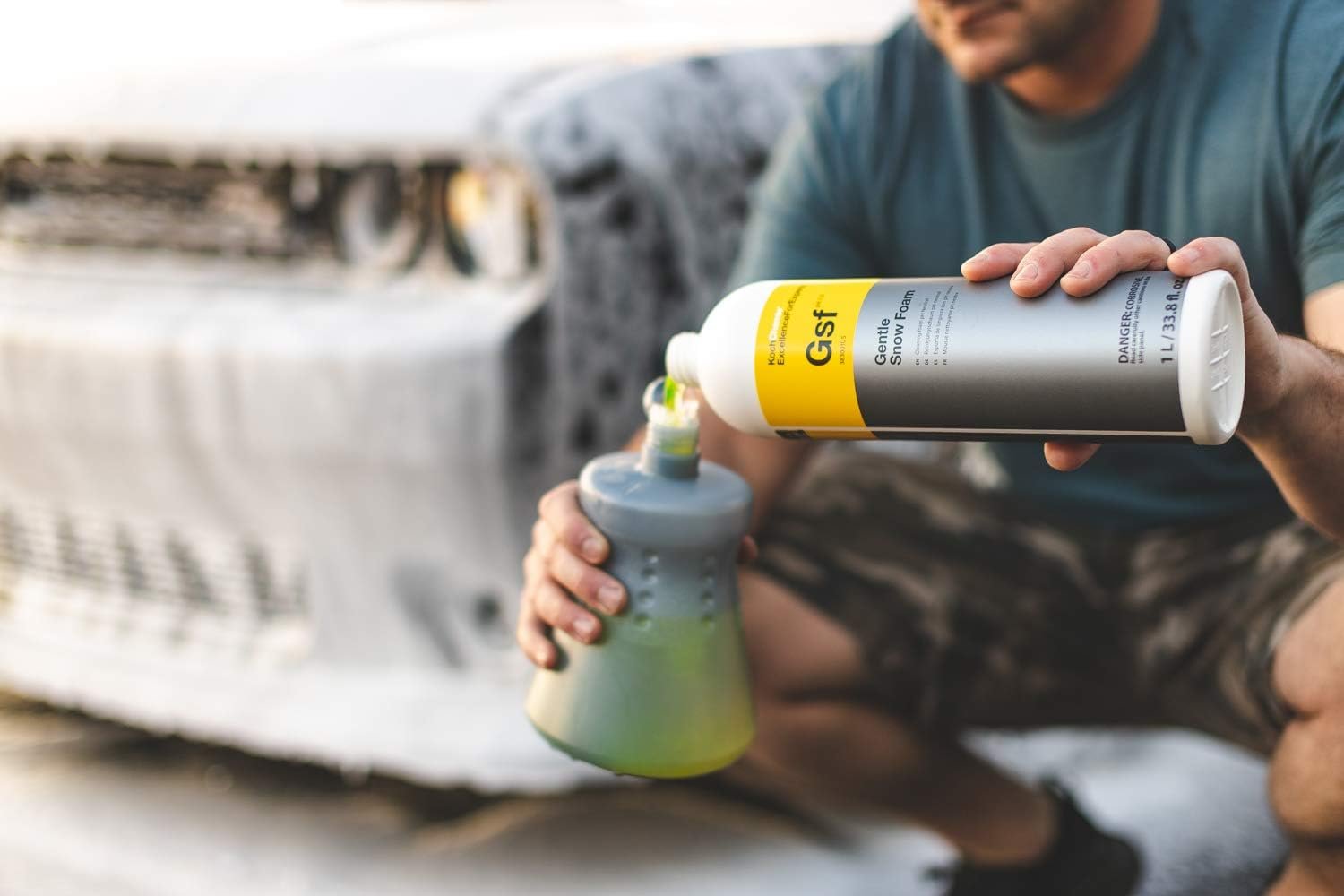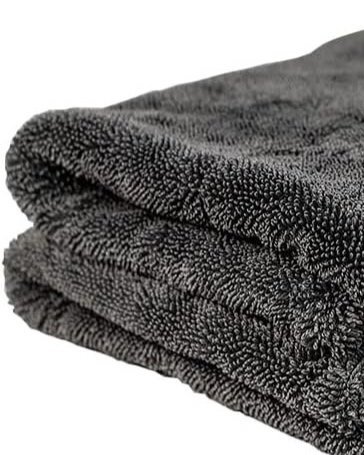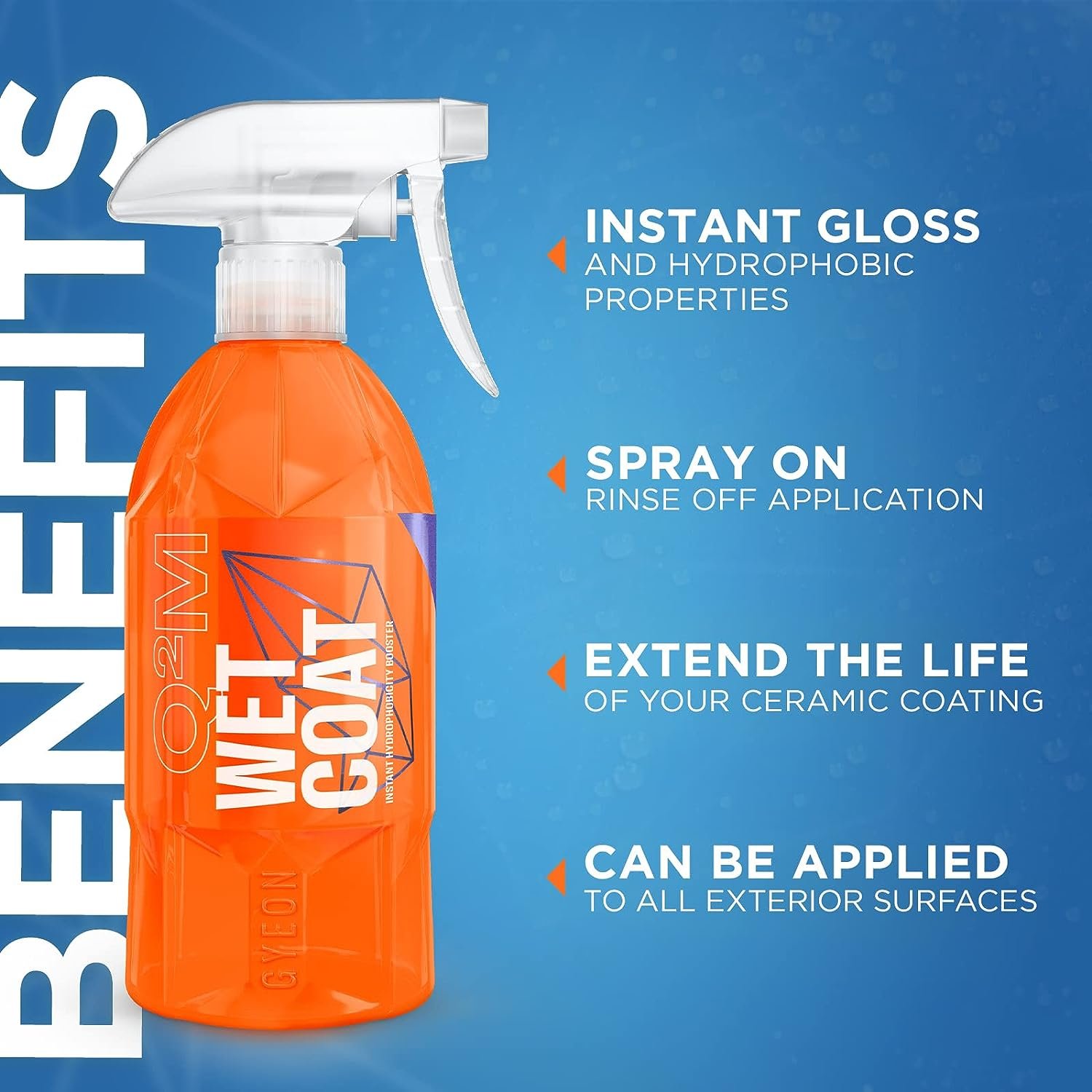Porsche Exterior Detailing and Protection Ceramic coating protection San Diego
Exterior Detailing After Rain: A Guide for San Diego Car Owners
The Importance of Exterior Detailing After Rain
Rainy days in San Diego may bring beautiful weather, but they can also leave your car with a less-than-desirable exterior.
Water spots, mud, and dirt can all accumulate on your vehicle, making it look dull and dirty. It's important to keep your car clean after rain to prevent buildup and maintain its appearance. Rain doesn't just affect your car—cars in general are exposed to contaminants like pollution and road salts, which can damage paint and reduce overall condition.
At Fresh Layer Mobile Detailing, the number one auto detailing company in San Diego, we have some tips for you.
Why Rain Can Be Harmful to Your Car’s Exterior
While rain might seem like a natural car wash, it can harm your vehicle’s exterior. Rainwater often contains pollutants, dust, and other contaminants picked up from the air before landing on your car.
When these contaminants dry on your car, they can leave behind water spots and mineral deposits that are difficult to remove and can damage your car's paint and car's finish over time.
Salt, especially from road treatments, can also be deposited on your car during rain and cause corrosion.
Additionally, repeated exposure to rain, moisture, and salt can accelerate the deterioration of the car's paint and finish, especially in areas where the paint has already been chipped or scratched.
Pre-Cleaning Preparation: Setting Up for Success
Before you start washing your car after a rainstorm, taking a few minutes for pre-cleaning preparation can make a big difference in the results.
Begin by removing any loose debris like leaves, twigs, or dirt that may have collected on your car’s surface during rainy weather. This simple step helps prevent scratches and keeps your car’s paint in top shape during the washing process.
If you live in an area with frequent rain or acid rain, using a car cover during the rainy season is a smart way to protect your vehicle from harmful contaminants and pollutants.
A car cover acts as a barrier, shielding your car from road grime, dust, and other contaminants that can stick to the paint and cause long term damage.
For added protection, apply a good coat of wax or a high-quality sealant before the rainy season begins.
This extra layer helps repel water, makes it easier to wash away grime, and keeps your car’s appearance looking fresh. By setting up your car for a thorough wash with these simple steps, you’ll help maintain its life, protect the paint, and keep your vehicle looking its best no matter what the weather brings.
The Importance of Exterior Detailing After Rain
After it rains, it’s essential to detail your car to protect the vehicle's exterior and prevent long-term damage from rainwater residue.
Exterior detailing removes dirt, pollutants, and other contaminants that have settled on your car during the rain. Regular car washes are also recommended to effectively remove these contaminants after rainfall.
This enhances your vehicle’s appearance and protects the paint and finish from environmental elements that can cause fading, oxidation, and rust. Leaving dirt and pollutants on your car for long periods can lead to more severe damage. Regularly detailing your car after rain can maintain its value and keep it looking showroom-new.
Essential Steps for Post-Rain Exterior Detailing
Step 1: Thoroughly Wash Your Car
Exterior detailing after rain should start with a thorough wash to remove any accumulated dirt and debris on the car. After rainfall, rainwater and dirt can end up sticking to the car's surface, making thorough washing essential to prevent water spots and potential damage.
This can be done by hand or with a pressure washer. Use quality car soap and a microfiber wash mitt to avoid scratching the paint.
You can rinse the car first from top to bottom and rinse the fender liners. Most of the dirt will get stuck there. Don’t hold the pressure washer close to your vehicle paint. It creates more scratches by dragging dirt around.
You can find more helpful examples on our YouTube channel as well. The best Diy car soap you can buy for your car is Koch-Chemie - Gentle Snow Foam - pH Neutral Pre-Cleaning.
Step 2: Dry Your Car Thoroughly
Once your car has been properly washed, the drying process is crucial to achieving a spotless finish and protecting your vehicle’s exterior.
Use a clean microfiber towel or a soft chamois to gently dry the surface, as this helps prevent unsightly water spots from forming. Be sure to dry all areas thoroughly, including hard-to-reach spots like the wheel wells, where dirt and grime often hide after rain.
After drying, take a few moments to inspect your car’s surface for any lingering dirt, grime, or contaminants that may have been missed during the wash.
Pay special attention to areas prone to buildup, such as around the wheels and under the doors. This careful inspection not only keeps your car looking sharp but also helps protect it from long term damage caused by moisture, snow, and pollution.
Regularly washing, drying, and inspecting your car after rain will help maintain its appearance, keep the surface in top shape, and ensure your vehicle is always ready to face the elements.
Best Drying Towel for Your Car
We select the best drying towels on the market for you.
After washing, it's essential to dry the car thoroughly to prevent water spots. A microfiber towel works well for this.
We love applying drying aids like 3D Bead It Up Ceramic Coating Booster Spray first to wet paint to help the drying process.
Dying aids help absorb water more and avoid more scratching. For drying towels, choose, we always go with Maxshine - Car Drying Towel.
Step 3: Remove Water Spots
If water spots do form, or if you notice stubborn contaminants left behind by the rain, additional steps may be needed. If water spots or contaminants are allowed to sit on your car's paint for too long, they can cause damage over time, so it's important to address them promptly.
For water spots, using a dedicated water spot remover can help dissolve the mineral deposits without damaging your paint. In cases where contaminants are stuck to the surface, a clay bar treatment can be effective.
A clay bar helps lift and remove embedded particles from your car’s paint, leaving it smooth and ready for waxing or sealing.
Step 4: Apply Wax or Sealant
Finally, give your car a good wax or sealant to protect the paint and give it a deep shine. This will also make it easier to maintain in the future and it'll be less likely for water spots to form.
Any paint protection products must be apply out of direct sun light to avoid any striking or spotting on the o paint.
And winner for DIY application is GYEON quartz Wet Coat the best and easy protection you can get for you home detailing arsenal
Dealing with Water Spots and Stubborn Contaminants
While DIY detailing is effective, sometimes it’s best to leave the job to the professionals, especially after heavy rain or when your car requires more extensive care.
One advantage of professional detailing services is access to advanced treatments and membership plans that offer ongoing benefits, such as unlimited washes and long-term protection for your vehicle.
Professional detailers have the expertise and tools to address issues like paint correction, water spot removal, and applying advanced protective coatings like ceramic. If your vehicle has been exposed to rain, salt, or pollutants, it’s important to have your car immediately cleaned by professionals to prevent damage and maintain its appearance.
Mobile detailing services in San Diego, like Fresh Layer Mobile Detailing, bring the convenience of expert care right to your doorstep, ensuring your car receives the best possible treatment.
Why Professional Detailing Might Be the Best Option
While DIY detailing is effective, sometimes it’s best to leave the job to the professionals, especially after heavy rain or when your car requires more extensive care.
Professional detailers have the expertise and tools to address issues like paint correction, water spot removal, and applying advanced protective coatings like ceramic.
Mobile detailing services in San Diego, like Fresh Layer Mobile Detailing, bring the convenience of expert care right to your doorstep, ensuring your car receives the best possible treatment.
Final Touches: Bringing Out the Shine
The final touches are what truly make your car stand out after a wash, especially following rainy weather.
Once your car is clean and dry, use a soft, clean cloth to gently wipe down the surface, removing any remaining streaks or water spots for a flawless finish. This step helps your car’s paint look its best and ensures a smooth, glossy appearance.
For added protection and a brilliant shine, apply a layer of wax or sealant.
This not only enhances your car’s appearance but also creates a protective barrier against future rain, dirt, snow, and pollution. If your car is frequently exposed to the elements, regular waxing is key to keeping the paint in top condition and making future washes easier.
Whether you prefer to hand wash your car at home or visit a professional car wash, consistency is essential.
By taking pride in your car’s appearance and following these final steps, you’ll maintain a clean car, protect its finish, and enjoy a lasting shine that turns heads wherever you go.
Preventative Measures for Rainy Weather
To minimize the impact of rain on your car’s exterior, consider taking preventative measures:
Use a car cover: Protect your car from rain and contaminants using a weatherproof car cover, especially if you don’t have access to a garage.
Apply a fresh coat of wax or sealant: Before the rainy season starts, apply a wax or sealant to create a protective barrier on your car’s paint.
Regular detailing: Keep up with regular detailing throughout the year to maintain your car’s appearance and protect it from environmental damage.
Wash your car before or after a storm: Washing your car before or after a storm can help protect it from rain spots and contaminants.
Some preventative measures, such as when to wash your car, depend on personal preference and individual circumstances.
Frequently Asked Questions (FAQs) About Exterior Detailing After Rain
-
It’s best to detail your car when it rains, ideally within a day or two. This prevents water spots and contaminants from settling into your paint.
-
Rain can carry pollutants and contaminants that can etch into your car’s paint if not properly washed off. Over time, repeated exposure to rain can lead to fading, oxidation, and rust.
-
DIY detailing is adequate for regular maintenance, but professional detailing offers more advanced services like paint correction and ceramic coating application. Professionals also have the expertise to deal with severe water spots and contaminants.
-
To prevent water spots, dry your car immediately after washing it after rain. Use a microfiber towel or air blower to remove water. Applying all surface wax or sealant can also help repel water and reduce the likelihood of spots forming.
-
Yes, ceramic coating protects against rain, UV rays, and contaminants. It’s a long-lasting solution that keeps your car looking new and reduces the need for frequent waxing.
Conclusion
By following these steps, you can keep your car looking great even on rainy days in San Diego.
Regular exterior detailing can help maintain the appearance of your vehicle and protect your investment.
To keep your car in top shape, it is recommend to schedule regular exterior detailing appointments or wash and wax service with Fresh Layer Mobile detailing , especially after the rainy season."








